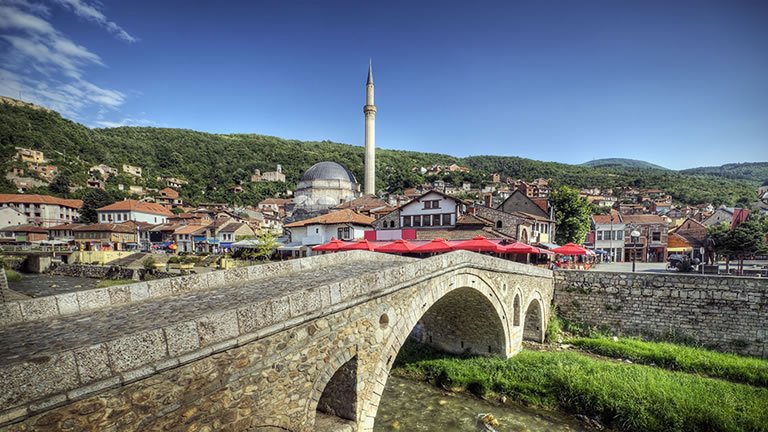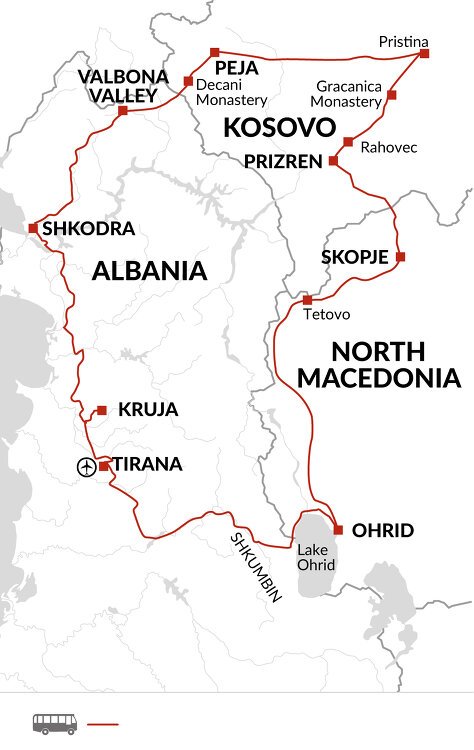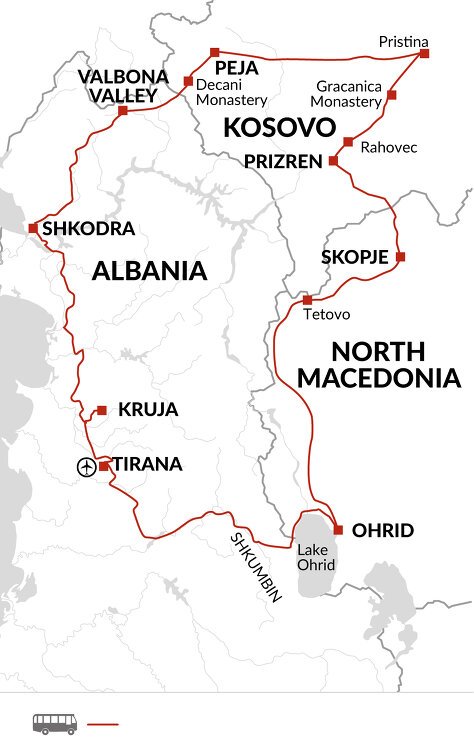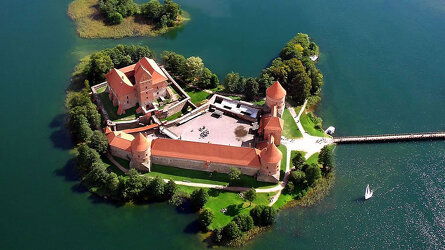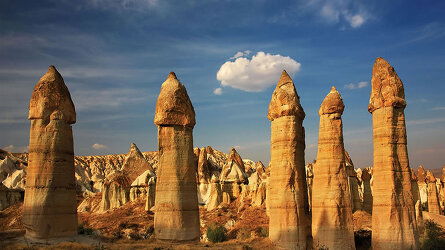Overview
Itinerary
Arrive in Tirana.
The Albanian capital is one of the most dynamic of the Western Balkans and surprises many first-time travellers with its lively restaurant, bar, and cafe scene worth discovering by both day and night.
For those arriving on time our Leader plans to meet you in the hotel reception at 6pm for the welcome meeting and for those that wish, there is the chance to go out for dinner afterwards.
There are no other activities planned today, so you are free to arrive in Tirana at any time. If you would like to receive a complimentary airport transfer today, you'll need to arrive into Tirana International Airport (airport code TIA) which is around thirty minutes' drive from the hotel. Should you miss the welcome meeting, your Tour Leader will inform you of any essential information as soon as you catch up.
If your flight arrives earlier in the day, perhaps you might choose to head out to explore the city which is easy to navigate on foot. The National Museum is well worth a visit to learn about the fascinating history of Albania. If you're into markets, check out Pazari i Ri, an open-air market where you can buy everything from fresh produce to local specialties such as byreks, baklavas and honey.
Whilst in Albania we'll have the opportunity to sample the delicious cuisine, which is a real mix of Turkish, Greek and Italian influences, like byrek - a spinach and feta stuffed filo pie, and in the more rural mountainous areas barbequed lamb and 'earthy' vegetables such as griddled aubergines and mushrooms are particularly popular. Along the coast there will of course be the chance to sample fresh seafood. Albanian red wine is especially good and also local beers, such as Birra Korca. Stay: Hotel Theatro (Comfortable)
This morning, we drive a short distance to the base of the Dajti Express cable car, which is the longest cableway in the Balkans. Our 15-minute journey takes us almost to the top of Mount Dajti at around 1,049 metres. From here, we'll hike to the summit of Tujani for views over the city below and the surrounding highlands.
Our trek will take us around three to four hours and will cover a distance of about five kilometres. The maximum altitude reached will be 1,503 metres. The walk today is graded as easy to moderate.
For those who do not want to hike, there are many things to do on top of the Dajti Mountain. You can simply relax at one of the restaurants while taking in the breathtaking views, go for a self-guided shorter hike or even visit the adventure park nearby the cable car.
There will be the opportunity to have lunch in a traditional mountain restaurant before taking the cable car back down and visit Bunk Art 1, a huge nuclear bunker that was intended as a shelter for dictator Enver Hoxha and the innermost circle of his government. In 2014-2016 the once secret facility was refurbished and opened as a museum and art centre.
Just arriving at the bunker is quite an exciting experience, as you go through a long, dark tunnel in the hillside that leads you to the entrance on the side of a still-active Albanian military base. Once you're inside the bunker itself, you can wander through the furnished rooms intended for the communist elite as they faced the invasion that so terrified them.
After the visit, return to Tirana and spend some free time exploring the city which comes to live in the evening, especially in the animated Blloku district. During the communist regime, this area of the city was restricted and only members of the Albanian Politburo (main political party) were permitted to enter and own villas in this upmarket area. Stay: Hotel Theatro (Comfortable) (B)
After breakfast, we leave Tirana and start driving towards Elbasan town and through the valley of Shkumbin crossing the border into North Macedonia and stopping in the small resort of Struga on the lake Ohrid.
The town's cut in half by the Black Drim River that flows right through the middle, and it's lined on both sides by bars and restaurants.
After our visit, we drive further to Lake Ohrid, which is situated against a dramatic mountain backdrop. Founded over 2400 years ago, Ohrid has a wealth of heritage and is today an important cultural and spiritual centre. To help its protection both the town and lake were classified as a UNESCO World Heritage Site in 1980. The lake is one of the oldest in the world and allegedly there are some 365 churches, monasteries, and other religious sites around the lake. After settling in our hotel, we explore Ohrid with our Tour leader, soaking up the mix of Ottoman and Byzantine architecture in the city including the Old Bazaar, the Amphitheatre, and the Old Castle Walls. Stay: Su Hotel, Ohrid (Comfortable) (B)
This morning, we take a boat ride to Saint Naum, an imposing sight on one of the lakes peninsulas, close to the Albanian border. The monastery of Saint Naum is surrounded by sandy beaches and inside we find impressive frescoes. We enjoy some free time here; perhaps you might decide to have some lunch in one of the restaurants alongside the beautiful springs. In the afternoon, we drive through the Galicica National Park to Lake Prespa. The wonderful nature will definitely make everyone enjoy the ride, especially when we stop at the viewpoint overlooking both lakes, one to your left and the other on the right side.
Straddling the borders of Albania, North Macedonia, and Greece, Lake Prespa is a unique transboundary lake shared by all three countries. It serves as a symbol of harmony and cooperation in the region. Prespa is home to more than 260 bird species, many of which are endangered or rare species. You will find birdwatching towers located over the whole region and on the shores and might catch a glimpse of pelicans, pygmy cormorants, herons, geese or wild ducks.
Spend the afternoon exploring the tranquil surroundings and enjoy its serenity before driving back to Orhid. Stay: Su Hotel, Ohrid (Comfortable) (B)
After an early breakfast, we take the road towards Kosovo with a first stop in Matka Canyon, one of the most beautiful places to visit in North Macedonia, known for its stunning natural scenery, with towering cliffs, deep gorges, and crystal clear lakes. Matka Canyon is home to the oldest artificial lake in Macedonia, Lake Matka and the whole canyon is a biological and geological wonderland. The name 'Matka' derives from the Macedonian word meaning womb, symbolizing the region's rich biodiversity.
Our last stop in North Macedonia is the historic city of Skopje. The city was rocked by a huge earthquake in 1963 which unfortunately destroyed an estimated 75% of the city's buildings, but it is still rich in culture and Ottoman heritage. We visit the city by foot to see some of the main attractions of the North Macedonian capital including the Kale Fortress, the Sveti Spas Monastery and the Ottoman Bazaar, which is the largest and most well preserved in south-east Europe.
We then continue our drive to the border crossing of ElezHan, where we say farewell to North Macedonia and hello to Kosovo. Kosovo is the world's newest country and has been independent only since 2008. Unfortunately, to most people Kosovo is most known for its war. However, it is a fascinating country boasting lots of treasures from past empires including Greek, Roman, Turkish and Ottoman.
The route takes us along the Kacanik Valley on a beautiful forest road to then reach Pristina. The capital city of Kosovo, is not conventionally beautiful on sight with centuries-old Ottoman heritage competing with communist designs and post-communist architectural outrages however Pristina is more than worth a visit for its hospitality and energic atmosphere, great food (put cakes at the top of that list), thick coffee, craft beers and relaxed feel, let alone for getting to know its role in the country's evolution. Stay: Hotel LaCorte Prishtina (Comfortable) (B)
This morning, our Tour Leader takes us around Pristina and in Old Pristina, you'll be able to see a 26-metre-high clock tower in the central bazaar area, which reminders stall holders and shoppers when it's time for prayer. The city's oldest mosques are found in this area as well. The National Library with its brutalist architecture is definitely eye catching and worth a look.
We leave Pristina and drive towards the outskirts of Pristina where we visit the Kosovo Battle Memorial. The memorial is devoted to the martyred Serb knights and is located where the Battle of Kosovo took place on 28th June 1389. Next, we visit the memorial of Sultan Murad I, reportedly the only Ottoman sultan ever to die in battle.
Our next stop is the visit of the splendid Monastery of Gracanica, which is one of the finest examples of Byzantine architecture in the country. It was built on the site of a ruined 6th century basilica by the Serbian King, Stefan Milutin, in 1321 and was declared a Monument of Exceptional Cultural Importance in 1990.
Then, we drive to the town of Peja, a city combining culture and the beauty of nature. Sitting on top of the ruins of an ancient Roman town, Siparantum, right on the foothills of the famous Accursed Mountains (Albanian Alps), Peja is known as one of the oldest towns in Kosovo. The afternoon will be spent visiting the town's attractions on foot including the Peja Bazaar, Bajrakli Mosque and Peja Town Square. Stay: Hotel Dukagjini (Comfortable) (B)
Today, we visit the highlands of Peja. Our day starts with an impressive drive through the dramatic Rugova Gorge to the alpine location of Boga, where we stop and take a hike to a nearby lake. The walk to the lake covers five kilometres and will take around five hours. We will climb and then descend from 1,400 metres to 1,800 metres. The mountain trail is fairly steep with rocky sections that are prone to be slippery when wet. We will go up and down following the same path. This walk is graded as moderate.
On our way back, we stop to visit the church complex of Peja Patriarch, boasting amazing frescoes and surrounded by the peaks of the Rugova Bjeshk Highlands, the Kosovo part of the Accursed Mountains.
In the evening, we return to Peja and spend the evening in town. Stay: Hotel Dukagjini (Comfortable) (B)
This morning, we visit the beautiful Decani Monastery, a UNESCO World Heritage Site. The Monastery was established in 1327 by the Serb King Stefan Decanski and is a superbly situated showpiece of Orthodox art. We continue our drive through the town of Junik, where we stop to visit the kulla. Built to protect families from blood feuds, these mini stone fortresses offer a real insight into daily Kosovo life. In some villages like Junik every family would have a kulla surrounded by high stone walls. Walking through such villages felt like walking through a medieval town. As unique symbols of Albanian architectural heritage, kullas were singled out during the 1999 war as targets for destruction.
We continue our drive to Prizren - a town dominated by Ottoman villas and perhaps the most authentic town in Kosovo. We'll spend the next two nights here and the rest of this afternoon is free for you to relax and settle in. Prizren is set at the foot of the Sharr Mountains and is Kosovo's second city. It's rich in history and you can see the architectural marks left by both the Byzantine and Ottoman empires. You can discover the 14th century UNESCO listed Church of the Virgin of Ljevis and Church of Saint George, which are both Serbian Orthodox in faith. There are a number of traditional handicraft shops to explore and a good selection of restaurants to choose from. Prizren is especially known for its filigree jewellery, which has been handmade locally here since the 15th century. In terms of food, barbeque restaurants are very popular and the grilled meats and Sharr cheese are a local speciality. It's also a good spot to try the baklava for dessert. Stay: Hotel Centrum (Comfortable) (B)
This morning, we stroll down the narrow cobbled streets of Prizren and around the Shadervan area we'll find the city's main Ottoman influences including the Sinan Pasha Mosque and the Old Stone Bridge. We'll also be able to see the outside of the old hammam before heading to Prizren Fortress, which dominates the skyline and where you can get great views from its hilltop position. On the opposite side of the river to Shadervan, we'll visit Prizren League House, which was once the headquarters where a failed uprising began to unite all Albanians within the region into a singular state.
This afternoon, we drive through rolling hills until we reach nearby Rahovec - the wine cellar of Kosovo. Wine has been made in this area for over 2000 years and we will visit a few wine makers to taste the unique produced there before making our way to the village of Hoqa e Vjeter, a Serbian enclave village, where we will visit a monastery that also makes wine.
Later this afternoon we return to Prizren for a free evening. Stay: Hotel Centrum (Comfortable) (B)
Today, we leave Kosovo and return to Albania. The drive is quite scenic, and we make a first stop in Gjakova one of the most charming city in Kosovo where we visit the Ottoman Bazaar. It may seem slow-paced today, but Gjakova was once a major trading hub. During the Ottoman period and Silk Road days this was a stop on the coveted route between Shkodra and Constantinople. And it has the Grand Bazaar to prove it. One of the largest and oldest in the region, it stretches over a kilometre and accommodates 500 delightful little shops, where artisans practice woodwork and hawk beautiful wedding costumes.
We then continue our drive and cross the border to Albania. We enter the pricturesque Valbona Valley where we will spend the next two nights. We check-in to a mountain hotel located in the centre of the vale, amidst the jagged peaks of the Accursed Mountains. In the afternoon, enjoy exploring the village by foot with the tour leader before returning to the hotel for a traditional dinner. Stay: Hotel NeoKulla (Comfortable) (B/D)
Valbona is one of the most beautiful alpine valleys of Albania. Today, we hike to the side Kukaj Valley, making our way through forest towards alpine pastures that offer stunning views of the valley and the surrounding mountains. We will have a picnic lunch and later visit a shepherd's family to taste a cup of fresh mountain tea.
In the afternoon, there is time to relax before a traditional dinner of lamb on the spit is served (vegetarian options also available).
Our walk today takes about two hours and is five kilometres. There is the opportunity to walk further on the day. It's along quiet village roads (asphalt and dirt) and well-trodden paths, but some sections are uphill, so is classified as easy to moderate. Stay: Hotel NeoKulla (Comfortable) (B/L/D)
Today, we leave the Valbona Valley and head for Shkoder.
Depending on the time of year and the ferry schedule, we either take a scenic ferry ride across Lake Koman or drive on the National Road through the scenic mountain landscape. Your Leader will advise on the day which option we will be taking.
In the afternoon, we arrive in Shkoder, the traditional centre of the Gheg cultural region and one of the oldest cities in Europe. Easily the most well-known attraction in Shkoder is Rozafa Castle, a massive stronghold that stands guard over the city like an enormous sentry. One of the highlights of visiting Rozafa Castle are the views. See clearly in every direction, including the city of Shkoder, the plains to the south, and Lake Shkoder and the border of Montenegro.
After our visit, we settle in our hotel and explore more of the city including the Mosque, Cathedrals and the local market. Stay: Hotel Tradita (Comfortable) (B)
After breakfast, we start our drive to the Adriatic Sea towards Durres. En route, we stop in Lezha to visit Skandarberg memorial. Skanderbeg was an Albanian nobleman and military commander who led a rebellion and successfully resisted the Ottoman Empire for 24 years. As the resistance brought Albanians from different regions together with a common cause it is argued that he helping define an Albanians identity.
In the afternoon, we arrive in Durres and visit the Roman Amphitheatre. The Amphitheater of Durres remains one of the most majestic of the ancient world and one of ten most beautiful Roman amphitheatres. Widely recognized among enthusiasts of Antiquity, it is a pearl of the Balkans that is slowly making its way out of the shell.
In the evening, take a sunset walk on the promenade and enjoy a fresh seafood dinner by the sea. Stay: Giulia Albergo Hotel (Comfortable) (B)
The trip ends after breakfast at our hotel in Durres.
There are no activities planned today, so you are free to depart from Durres at any time. If your flight is departing later in the day, luggage storage facilities are available at our hotel. If you would like an airport transfer today, you need to depart from Tirana International Airport (TIA), which is about 40 minutes' drive. (B)
Arrive in Tirana.
The Albanian capital is one of the most dynamic of the Western Balkans and surprises many first-time travellers with its lively restaurant, bar, and cafe scene worth discovering by both day and night.
For those arriving on time our Leader plans to meet you in the hotel reception at 6pm for the welcome meeting and for those that wish, there is the chance to go out for dinner afterwards.
There are no other activities planned today, so you are free to arrive in Tirana at any time. If you would like to receive a complimentary airport transfer today, you'll need to arrive into Tirana International Airport (airport code TIA) which is around thirty minutes' drive from the hotel. Should you miss the welcome meeting, your Tour Leader will inform you of any essential information as soon as you catch up.
If your flight arrives earlier in the day, perhaps you might choose to head out to explore the city which is easy to navigate on foot. The National Museum is well worth a visit to learn about the fascinating history of Albania. If you're into markets, check out Pazari i Ri, an open-air market where you can buy everything from fresh produce to local specialties such as byreks, baklavas and honey.
Whilst in Albania we'll have the opportunity to sample the delicious cuisine, which is a real mix of Turkish, Greek and Italian influences, like byrek - a spinach and feta stuffed filo pie, and in the more rural mountainous areas barbequed lamb and 'earthy' vegetables such as griddled aubergines and mushrooms are particularly popular. Along the coast there will of course be the chance to sample fresh seafood. Albanian red wine is especially good and also local beers, such as Birra Korca. Stay: Hotel Theatro (Comfortable)
This morning, we drive a short distance to the base of the Dajti Express cable car, which is the longest cableway in the Balkans. Our 15-minute journey takes us almost to the top of Mount Dajti at around 1,049 metres. From here, we'll hike to the summit of Tujani for views over the city below and the surrounding highlands.
Our trek will take us around three to four hours and will cover a distance of about five kilometres. The maximum altitude reached will be 1,503 metres. The walk today is graded as easy to moderate.
For those who do not want to hike, there are many things to do on top of the Dajti Mountain. You can simply relax at one of the restaurants while taking in the breathtaking views, go for a self-guided shorter hike or even visit the adventure park nearby the cable car.
There will be the opportunity to have lunch in a traditional mountain restaurant before taking the cable car back down and visit Bunk Art 1, a huge nuclear bunker that was intended as a shelter for dictator Enver Hoxha and the innermost circle of his government. In 2014-2016 the once secret facility was refurbished and opened as a museum and art centre.
Just arriving at the bunker is quite an exciting experience, as you go through a long, dark tunnel in the hillside that leads you to the entrance on the side of a still-active Albanian military base. Once you're inside the bunker itself, you can wander through the furnished rooms intended for the communist elite as they faced the invasion that so terrified them.
After the visit, return to Tirana and spend some free time exploring the city which comes to live in the evening, especially in the animated Blloku district. During the communist regime, this area of the city was restricted and only members of the Albanian Politburo (main political party) were permitted to enter and own villas in this upmarket area. Stay: Hotel Theatro (Comfortable) (B)
After breakfast, we leave Tirana and start driving towards Elbasan town and through the valley of Shkumbin crossing the border into North Macedonia and stopping in the small resort of Struga on the lake Ohrid.
The town's cut in half by the Black Drim River that flows right through the middle, and it's lined on both sides by bars and restaurants.
After our visit, we drive further to Lake Ohrid, which is situated against a dramatic mountain backdrop. Founded over 2400 years ago, Ohrid has a wealth of heritage and is today an important cultural and spiritual centre. To help its protection both the town and lake were classified as a UNESCO World Heritage Site in 1980. The lake is one of the oldest in the world and allegedly there are some 365 churches, monasteries, and other religious sites around the lake. After settling in our hotel, we explore Ohrid with our Tour leader, soaking up the mix of Ottoman and Byzantine architecture in the city including the Old Bazaar, the Amphitheatre, and the Old Castle Walls. Stay: Su Hotel, Ohrid (Comfortable) (B)
This morning, we take a boat ride to Saint Naum, an imposing sight on one of the lakes peninsulas, close to the Albanian border. The monastery of Saint Naum is surrounded by sandy beaches and inside we find impressive frescoes. We enjoy some free time here; perhaps you might decide to have some lunch in one of the restaurants alongside the beautiful springs. In the afternoon, we drive through the Galicica National Park to Lake Prespa. The wonderful nature will definitely make everyone enjoy the ride, especially when we stop at the viewpoint overlooking both lakes, one to your left and the other on the right side.
Straddling the borders of Albania, North Macedonia, and Greece, Lake Prespa is a unique transboundary lake shared by all three countries. It serves as a symbol of harmony and cooperation in the region. Prespa is home to more than 260 bird species, many of which are endangered or rare species. You will find birdwatching towers located over the whole region and on the shores and might catch a glimpse of pelicans, pygmy cormorants, herons, geese or wild ducks.
Spend the afternoon exploring the tranquil surroundings and enjoy its serenity before driving back to Orhid. Stay: Su Hotel, Ohrid (Comfortable) (B)
After an early breakfast, we take the road towards Kosovo with a first stop in Matka Canyon, one of the most beautiful places to visit in North Macedonia, known for its stunning natural scenery, with towering cliffs, deep gorges, and crystal clear lakes. Matka Canyon is home to the oldest artificial lake in Macedonia, Lake Matka and the whole canyon is a biological and geological wonderland. The name 'Matka' derives from the Macedonian word meaning womb, symbolizing the region's rich biodiversity.
Our last stop in North Macedonia is the historic city of Skopje. The city was rocked by a huge earthquake in 1963 which unfortunately destroyed an estimated 75% of the city's buildings, but it is still rich in culture and Ottoman heritage. We visit the city by foot to see some of the main attractions of the North Macedonian capital including the Kale Fortress, the Sveti Spas Monastery and the Ottoman Bazaar, which is the largest and most well preserved in south-east Europe.
We then continue our drive to the border crossing of ElezHan, where we say farewell to North Macedonia and hello to Kosovo. Kosovo is the world's newest country and has been independent only since 2008. Unfortunately, to most people Kosovo is most known for its war. However, it is a fascinating country boasting lots of treasures from past empires including Greek, Roman, Turkish and Ottoman.
The route takes us along the Kacanik Valley on a beautiful forest road to then reach Pristina. The capital city of Kosovo, is not conventionally beautiful on sight with centuries-old Ottoman heritage competing with communist designs and post-communist architectural outrages however Pristina is more than worth a visit for its hospitality and energic atmosphere, great food (put cakes at the top of that list), thick coffee, craft beers and relaxed feel, let alone for getting to know its role in the country's evolution. Stay: Hotel LaCorte Prishtina (Comfortable) (B)
This morning, our Tour Leader takes us around Pristina and in Old Pristina, you'll be able to see a 26-metre-high clock tower in the central bazaar area, which reminders stall holders and shoppers when it's time for prayer. The city's oldest mosques are found in this area as well. The National Library with its brutalist architecture is definitely eye catching and worth a look.
We leave Pristina and drive towards the outskirts of Pristina where we visit the Kosovo Battle Memorial. The memorial is devoted to the martyred Serb knights and is located where the Battle of Kosovo took place on 28th June 1389. Next, we visit the memorial of Sultan Murad I, reportedly the only Ottoman sultan ever to die in battle.
Our next stop is the visit of the splendid Monastery of Gracanica, which is one of the finest examples of Byzantine architecture in the country. It was built on the site of a ruined 6th century basilica by the Serbian King, Stefan Milutin, in 1321 and was declared a Monument of Exceptional Cultural Importance in 1990.
Then, we drive to the town of Peja, a city combining culture and the beauty of nature. Sitting on top of the ruins of an ancient Roman town, Siparantum, right on the foothills of the famous Accursed Mountains (Albanian Alps), Peja is known as one of the oldest towns in Kosovo. The afternoon will be spent visiting the town's attractions on foot including the Peja Bazaar, Bajrakli Mosque and Peja Town Square. Stay: Hotel Dukagjini (Comfortable) (B)
Today, we visit the highlands of Peja. Our day starts with an impressive drive through the dramatic Rugova Gorge to the alpine location of Boga, where we stop and take a hike to a nearby lake. The walk to the lake covers five kilometres and will take around five hours. We will climb and then descend from 1,400 metres to 1,800 metres. The mountain trail is fairly steep with rocky sections that are prone to be slippery when wet. We will go up and down following the same path. This walk is graded as moderate.
On our way back, we stop to visit the church complex of Peja Patriarch, boasting amazing frescoes and surrounded by the peaks of the Rugova Bjeshk Highlands, the Kosovo part of the Accursed Mountains.
In the evening, we return to Peja and spend the evening in town. Stay: Hotel Dukagjini (Comfortable) (B)
This morning, we visit the beautiful Decani Monastery, a UNESCO World Heritage Site. The Monastery was established in 1327 by the Serb King Stefan Decanski and is a superbly situated showpiece of Orthodox art. We continue our drive through the town of Junik, where we stop to visit the kulla. Built to protect families from blood feuds, these mini stone fortresses offer a real insight into daily Kosovo life. In some villages like Junik every family would have a kulla surrounded by high stone walls. Walking through such villages felt like walking through a medieval town. As unique symbols of Albanian architectural heritage, kullas were singled out during the 1999 war as targets for destruction.
We continue our drive to Prizren - a town dominated by Ottoman villas and perhaps the most authentic town in Kosovo. We'll spend the next two nights here and the rest of this afternoon is free for you to relax and settle in. Prizren is set at the foot of the Sharr Mountains and is Kosovo's second city. It's rich in history and you can see the architectural marks left by both the Byzantine and Ottoman empires. You can discover the 14th century UNESCO listed Church of the Virgin of Ljevis and Church of Saint George, which are both Serbian Orthodox in faith. There are a number of traditional handicraft shops to explore and a good selection of restaurants to choose from. Prizren is especially known for its filigree jewellery, which has been handmade locally here since the 15th century. In terms of food, barbeque restaurants are very popular and the grilled meats and Sharr cheese are a local speciality. It's also a good spot to try the baklava for dessert. Stay: Hotel Centrum (Comfortable) (B)
This morning, we stroll down the narrow cobbled streets of Prizren and around the Shadervan area we'll find the city's main Ottoman influences including the Sinan Pasha Mosque and the Old Stone Bridge. We'll also be able to see the outside of the old hammam before heading to Prizren Fortress, which dominates the skyline and where you can get great views from its hilltop position. On the opposite side of the river to Shadervan, we'll visit Prizren League House, which was once the headquarters where a failed uprising began to unite all Albanians within the region into a singular state.
This afternoon, we drive through rolling hills until we reach nearby Rahovec - the wine cellar of Kosovo. Wine has been made in this area for over 2000 years and we will visit a few wine makers to taste the unique produced there before making our way to the village of Hoqa e Vjeter, a Serbian enclave village, where we will visit a monastery that also makes wine.
Later this afternoon we return to Prizren for a free evening. Stay: Hotel Centrum (Comfortable) (B)
Today, we leave Kosovo and return to Albania. The drive is quite scenic, and we make a first stop in Gjakova one of the most charming city in Kosovo where we visit the Ottoman Bazaar. It may seem slow-paced today, but Gjakova was once a major trading hub. During the Ottoman period and Silk Road days this was a stop on the coveted route between Shkodra and Constantinople. And it has the Grand Bazaar to prove it. One of the largest and oldest in the region, it stretches over a kilometre and accommodates 500 delightful little shops, where artisans practice woodwork and hawk beautiful wedding costumes.
We then continue our drive and cross the border to Albania. We enter the pricturesque Valbona Valley where we will spend the next two nights. We check-in to a mountain hotel located in the centre of the vale, amidst the jagged peaks of the Accursed Mountains. In the afternoon, enjoy exploring the village by foot with the tour leader before returning to the hotel for a traditional dinner. Stay: Hotel NeoKulla (Comfortable) (B/D)
Valbona is one of the most beautiful alpine valleys of Albania. Today, we hike to the side Kukaj Valley, making our way through forest towards alpine pastures that offer stunning views of the valley and the surrounding mountains. We will have a picnic lunch and later visit a shepherd's family to taste a cup of fresh mountain tea.
In the afternoon, there is time to relax before a traditional dinner of lamb on the spit is served (vegetarian options also available).
Our walk today takes about two hours and is five kilometres. There is the opportunity to walk further on the day. It's along quiet village roads (asphalt and dirt) and well-trodden paths, but some sections are uphill, so is classified as easy to moderate. Stay: Hotel NeoKulla (Comfortable) (B/L/D)
Today, we leave the Valbona Valley and head for Shkoder.
Depending on the time of year and the ferry schedule, we either take a scenic ferry ride across Lake Koman or drive on the National Road through the scenic mountain landscape. Your Leader will advise on the day which option we will be taking.
In the afternoon, we arrive in Shkoder, the traditional centre of the Gheg cultural region and one of the oldest cities in Europe. Easily the most well-known attraction in Shkoder is Rozafa Castle, a massive stronghold that stands guard over the city like an enormous sentry. One of the highlights of visiting Rozafa Castle are the views. See clearly in every direction, including the city of Shkoder, the plains to the south, and Lake Shkoder and the border of Montenegro.
After our visit, we settle in our hotel and explore more of the city including the Mosque, Cathedrals and the local market. Stay: Hotel Tradita (Comfortable) (B)
After breakfast, we start our drive to the Adriatic Sea towards Durres. En route, we stop in Lezha to visit Skandarberg memorial. Skanderbeg was an Albanian nobleman and military commander who led a rebellion and successfully resisted the Ottoman Empire for 24 years. As the resistance brought Albanians from different regions together with a common cause it is argued that he helping define an Albanians identity.
In the afternoon, we arrive in Durres and visit the Roman Amphitheatre. The Amphitheater of Durres remains one of the most majestic of the ancient world and one of ten most beautiful Roman amphitheatres. Widely recognized among enthusiasts of Antiquity, it is a pearl of the Balkans that is slowly making its way out of the shell.
In the evening, take a sunset walk on the promenade and enjoy a fresh seafood dinner by the sea. Stay: Giulia Albergo Hotel (Comfortable) (B)
The trip ends after breakfast at our hotel in Durres.
There are no activities planned today, so you are free to depart from Durres at any time. If your flight is departing later in the day, luggage storage facilities are available at our hotel. If you would like an airport transfer today, you need to depart from Tirana International Airport (TIA), which is about 40 minutes' drive. (B)
Trip Inclusions
- Discover the history and incredible scenery of Albania, North Macedonia, Kosovo
- Walk through the dramatic Valbona Valley surrounded by the jagged peaks of the Accursed Mountains
- Explore Lake Orhid, this glistening lake boasting many cultural monuments including the Saint Naum Monastery
- Moderate pace tours are ideal if you want a holiday which combines exciting activities and experiences with plenty of time to relax and unwind. Typically you'll be active and busy for part of the day but then also have time to rest and recharge your batteries.
- Accommodation, itinerary and inclusions subject to change.
- Price is for land, cruise and internal flights as specified. Flights not specified are not included
- Discover the history and incredible scenery of Albania, North Macedonia, Kosovo
- Walk through the dramatic Valbona Valley surrounded by the jagged peaks of the Accursed Mountains
- Explore Lake Orhid, this glistening lake boasting many cultural monuments including the Saint Naum Monastery
- Moderate pace tours are ideal if you want a holiday which combines exciting activities and experiences with plenty of time to relax and unwind. Typically you'll be active and busy for part of the day but then also have time to rest and recharge your batteries.
- Accommodation, itinerary and inclusions subject to change.
- Price is for land, cruise and internal flights as specified. Flights not specified are not included
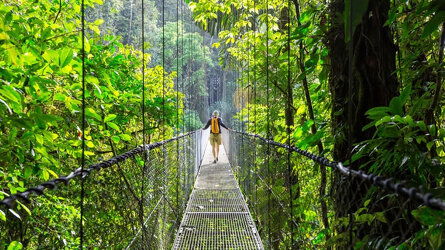
Launching in 1981, Explore offer trips from over 130 countries - from classic small group tours. Read more
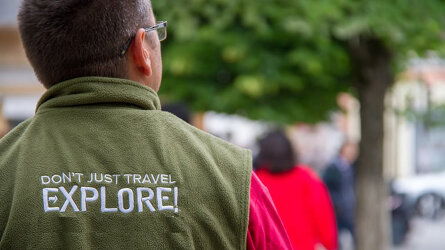
Explore's leaders are more than just your typical guide. They're your local expert are are passionate about sharing their expertise with you. Read more
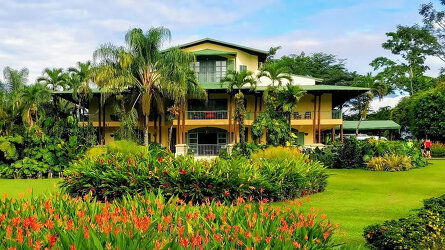
The places Explore stay are every bit as important as the sights they visit and the things you do. Read more

Launching in 1981, Explore offer trips from over 130 countries - from classic small group tours. Read more

Explore's leaders are more than just your typical guide. They're your local expert are are passionate about sharing their expertise with you. Read more

The places Explore stay are every bit as important as the sights they visit and the things you do. Read more
Brochure

Explore Small Group Adventures (2024-25)
Brochure

Explore Small Group Adventures (2024-25)
Availability
A definite departure means minimum numbers have been reached for this departure to operate. Your Global Journeys Travel Advisor will check the availability of your departure date when you enquire. Additional savings may apply. We guarantee the lowest price in Australia. T&C’s apply.
Tour & cruises prices are per person. Prices shown have savings applied, are subject to availability and may be withdrawn at any time without notice. Prices and trip information are correct at the time at this point in time, however are subject to confirmation at the time of booking and are subject to change by Explore. For cruise itineraries, cabin images are sourced from Explore. These should be treated as indicative only. Cabin inclusions, upholsteries and room layout may differ to the image(s) shown depending on the ship selected and your sailing dates.
